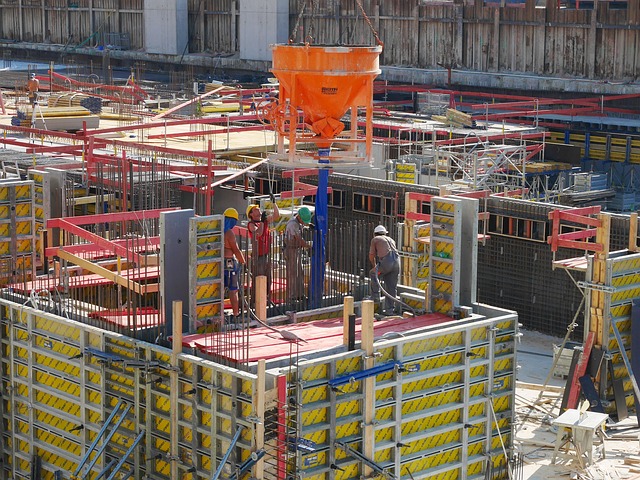Utility mapping services have evolved significantly with advanced technologies like 3D and GIS mapping for both urban and rural settings. Urban areas require intricate navigation of underground utilities using 3D and subsurface mapping integrated with GIS, while rural regions demand accurate utility line mapping via aerial imaging and LiDAR scanning. Professional utility mapping contractors utilize these innovative methods to deliver precise solutions, enhancing safety, streamlining projects, and optimizing resource allocation. Choosing the right contractor with expertise in both underground and GIS utility mapping, including 3D services, ensures successful infrastructure development and reliable data collection.
In today’s digital era, precise urban and rural utility mapping is paramount for efficient infrastructure management. From bustling metropolis to remote landscapes, understanding the unique challenges of these environments is key to successful projects. This article explores tailored solutions in utility mapping services, including advanced technologies like 3D and GIS mapping, that enhance accuracy and streamline operations. We’ll delve into benefits, best practices, and how to select the ideal contractor for your specific needs, ensuring reliable, subsurface utility mapping solutions.
Understanding Urban and Rural Utility Mapping Challenges
Utility mapping projects in urban and rural areas present distinct challenges that require specialized knowledge and tools. In densely populated cities, navigating through a complex web of underground utilities is crucial for safe excavation and infrastructure development. Professional utility mapping services employ advanced techniques like 3D utility mapping and subsurface utility mapping to accurately identify and locate critical lines, pipes, and cables. These technologies integrate seamlessly with Geographic Information Systems (GIS) to provide detailed digital maps that enhance project planning and management.
In contrast, rural areas pose challenges related to limited data availability and diverse terrain conditions. Accurate utility line mapping becomes essential for remote communities relying on reliable utilities for daily life and economic activities. Experienced utility mapping contractors utilize innovative solutions like aerial imaging and LiDAR scanning to create comprehensive maps that account for subsurface infrastructure. By combining these advanced methods with GIS-based analysis, they deliver precise and up-to-date utility mapping solutions tailored to meet the unique needs of both urban and rural environments.
The Benefits of Tailored Solutions for Precision Mapping
In today’s digital era, tailored solutions for utility mapping services have become indispensable for both urban and rural infrastructure management. Traditional methods often fall short when it comes to achieving accurate and comprehensive underground utility mapping, leaving room for professional utility mapping contractors to step in with advanced technologies like 3D utility mapping and GIS utility mapping. These innovative approaches ensure precise identification and documentation of various utilities—from water lines and gas pipes to electric cables and telecommunications networks—hidden beneath the surface.
Accurate utility mapping solutions offer numerous benefits, including improved safety for construction projects and reduced risk of damage to critical infrastructure. By leveraging 3D models and detailed subsurface utility mapping data, contractors can navigate labyrinthine urban environments or remote rural landscapes with precision. This level of detail enables more effective planning, efficient project execution, and better resource allocation, ultimately leading to cost savings and faster turnaround times for all types of utilities line mapping projects.
Advanced Technologies in Professional Utility Mapping Services
In today’s digital era, advanced technologies have revolutionized professional utility mapping services, ensuring accurate and efficient utility mapping solutions. Gone are the days when manual methods and traditional 2D maps dominated the industry. Now, utility line mapping and subsurface utility mapping leverage cutting-edge tools like Global Positioning System (GPS) technology, LiDAR scanners, and high-resolution aerial imagery to create detailed GIS utility mapping platforms. These innovative approaches enable contractors to visualize and track underground utilities with unparalleled precision.
For instance, 3D utility mapping combines data from multiple sources to generate three-dimensional models of the subsurface infrastructure network. This dynamic capability not only enhances visibility but also facilitates informed decision-making during urban and rural projects. By embracing these advanced technologies, utility mapping contractors can deliver more robust, up-to-date maps that streamline construction, maintenance, and repair processes while minimizing damage to critical utilities.
Choosing the Right Utility Mapping Contractor for Your Project
When embarking on urban or rural utility mapping projects, selecting the right contractor is a game-changer. It’s crucial to choose professionals who offer tailored solutions and possess the expertise for both underground utility mapping and GIS utility mapping. Look for companies providing advanced 3D utility mapping services, as these deliver accurate and detailed subsurface utility mapping results.
Ensure they have a proven track record in delivering precise utility line mapping solutions. Their experience should span diverse project scopes, from small-scale rural initiatives to complex urban renewal endeavors. Engaging with a contractor that specializes in professional utility mapping will result in efficient project execution and reliable data collection, setting the stage for successful infrastructure development or renovation.
In light of the diverse challenges presented by urban and rural landscapes, tailored solutions for utility mapping are essential. By leveraging advanced technologies like 3D mapping, GIS integration, and subsurface scanning, professional utility mapping services ensure accurate identification and documentation of underground utilities. When selecting a contractor, consider their expertise in both precision mapping and local terrain requirements to achieve optimal results. These comprehensive approaches facilitate safer excavation, reduce project delays, and safeguard critical infrastructure, ultimately enhancing the efficiency and reliability of urban and rural utility mapping projects.
